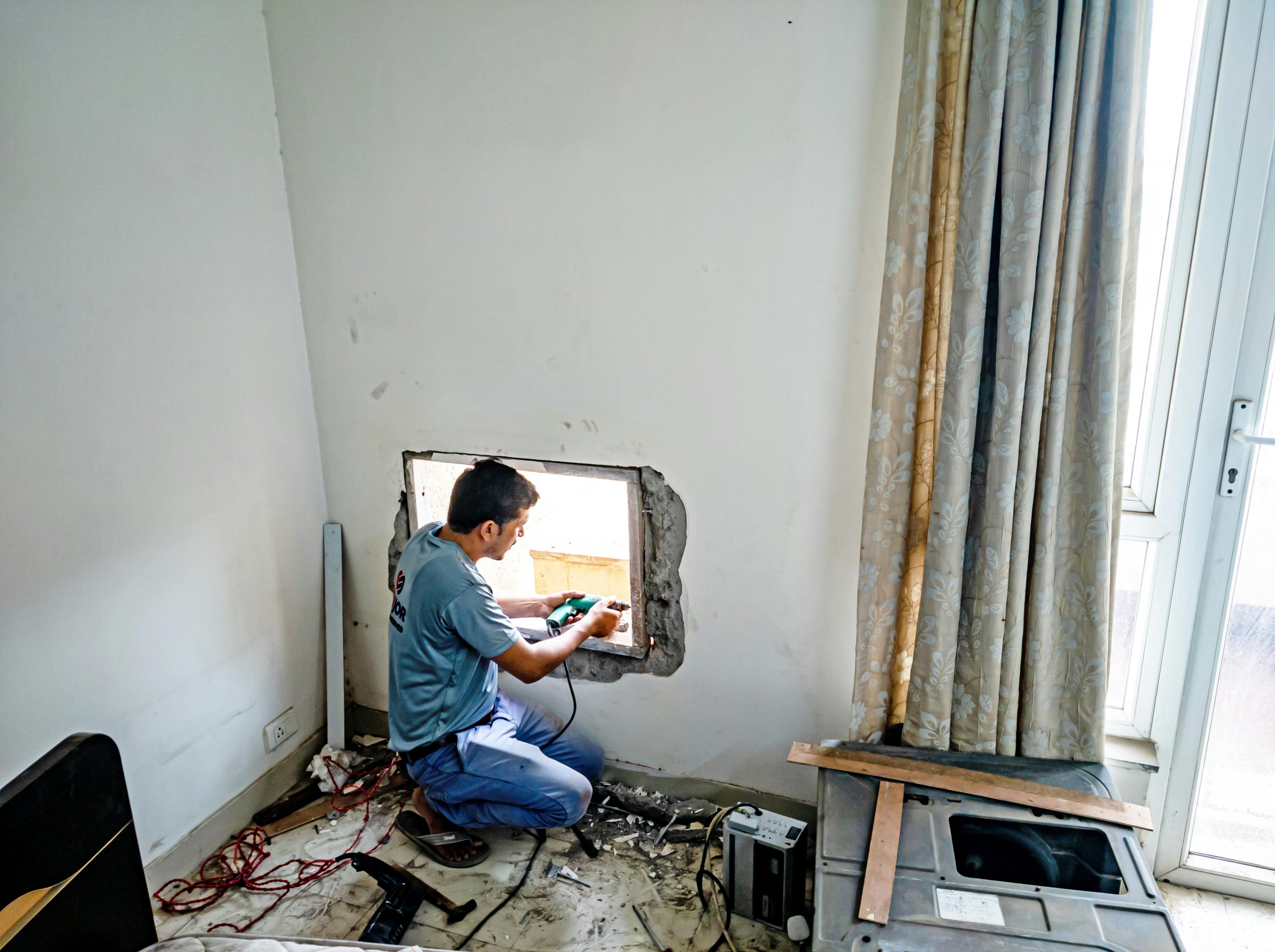Are you frustrated with IP conflicts disrupting your Windows 11 experience? If you’re dealing with network issues, you’re not alone. In today’s tech-savvy world, IP conflict problems can seriously hinder productivity, whether you’re working from home or streaming your favorite shows. But don’t worry! This article will unveil quick and effective solutions to resolve those pesky network issues that might be driving you crazy.
Understanding how to tackle Windows 11 IP conflicts not only saves you time but also enhances your overall connectivity. From simple troubleshooting steps to advanced network configurations, we will explore various methods to help you regain control of your internet connection. Have you ever thought about how an IP address conflict occurs? It usually happens when two devices on the same network are assigned the same IP address, leading to confusion and loss of connection. But fear not! Our solutions are designed to get your network back on track in no time.
So, are you ready to dive into the world of Windows 11 network settings? Whether you’re a tech newbie or a seasoned pro, our easy-to-follow guide will empower you to resolve these network issues quickly and efficiently. Say goodbye to the frustration of IP conflicts and hello to a seamless online experience! Keep reading to discover the best tips and tricks for troubleshooting your Windows 11 IP conflict issues today.
5 Proven Steps to Diagnose and Resolve IP Conflicts in Windows 11 Network Settings

Network issues can be super frustrating, especially when you running into IP conflicts in Windows 11. If you’ve ever had trouble connecting to the internet, you probably know how important it is to have a stable network. IP conflicts happen when two devices on the same network are assigned the same IP address. This can lead to all kinds of problems, from slow connections to total disconnection. Here’s a simple guide with 5 proven steps that can help you diagnose and resolve these conflicts without pulling your hair out.
Step 1: Check Your Network Connections
First thing, you need to check your network connections. You can do this by opening the Settings app. Go to Network & Internet and then click on Status. This will show you if you’re connected or not. If it says “No Internet,” that’s a big red flag. Sometimes, the issue could be with the router. Unplugging it for a minute and plugging it back in can fix a lot of problems.
Step 2: Release and Renew IP Address
After checking your connections, the next step is to release and renew your IP address. This is done through the Command Prompt. You can search for “cmd” in the start menu, right-click on Command Prompt, and select Run as administrator. Once the Command Prompt opens, type the following commands:
- ipconfig /release
- ipconfig /renew
By releasing the IP address, you are telling your device to forget its current address. When you renew it, your device gets a new one from the DHCP server, potentially resolving the conflict.
Step 3: Check for Duplicate IP Address
Now, you need to check if there’s really a duplicate IP address. You can do this by using the Command Prompt again. Type “arp -a” and hit enter. This command lists all the IP addresses currently in use on your network. Look for any duplicates. If you see the same IP address assigned to different devices, that’s your problem. You can either change the IP address of one of the devices manually or configure your router to assign addresses automatically.
Step 4: Change Network Adapter Settings
If you still having issues, you might have to change the network adapter settings. Go to Settings, then Network & Internet, and click on Network and Sharing Center. From there, click on Change adapter settings. Right-click on your network connection, then click Properties. Check the Internet Protocol Version 4 (TCP/IPv4) and click on Properties again. Here you can manually set a static IP address that’s not in use. Be sure to choose an address within the same subnet as your router, but not the same as any other device.
Step 5: Restart Your Computer and Router
Finally, sometimes all you need is a good old restart. After making all these changes, restart both your computer and your router. This can help apply the changes you’ve made and clear out any temporary glitches that might be causing the conflicts.
Quick Windows 11 IP Conflict Solutions
If you need quick solutions, here’s a summarized list:
- Check network connections
- Release and renew your IP address
- Use Command Prompt to check for duplicates
- Adjust network adapter settings
- Restart your devices
By following these steps, you can diagnose and fix most IP conflicts in your Windows 11 network settings. It’s always good to keep your device updated and run regular checks to prevent issues before they start. Don’t let network issues keep you from enjoying a seamless online experience.
How to Fix IP Address Conflicts in Windows 11: A Comprehensive Guide for Users

IP address conflicts can be a real hassle for Windows 11 users. When two devices on the same network tries to use the same IP address, it leads to disconnects and can even affect your productivity. In New York, many users are encountering this issue, but thankfully, there are some straightforward solutions. Here’s a comprehensive guide on how to fix IP address conflicts in Windows 11.
Understanding IP Address Conflicts
An IP address conflict occurs when two devices are assigned the same IP address. This can happen for various reasons, such as:
- Static IP Assignments: If you’ve manually set the same IP for multiple devices.
- DHCP Issues: When the DHCP server assigns the same IP address to different devices.
- Network Configuration Errors: Problems in network configurations can also cause this.
Knowing why it occurs can help you prevent it in the future.
Quick Windows 11 IP Conflict Solutions
-
Release and Renew Your IP Address
- Open Command Prompt by searching for it in the Start menu.
- Type
ipconfig /releaseand hit Enter. This will release the current IP address. - Next, type
ipconfig /renewto request a new IP address from the DHCP server.
-
Restart Your Router
- Sometimes, the easiest way to resolve conflicts is to restart your router. Just unplug it for about 30 seconds and plug it back in. This can refresh the network and clear up any issues.
-
Check for Static IP Assignments
- Go to Settings > Network & Internet > Advanced network settings.
- Click on More network adapter options, right-click on your network, and select Properties.
- Under Internet Protocol Version 4 (TCP/IPv4), check if it’s set to obtain an IP address automatically. If it’s set to a manual IP, change it back to automatic.
-
Update Network Drivers
- Sometimes outdated drivers causes issues. Go to Device Manager, find Network adapters, right-click on your adapter, and select Update driver. This can help with connectivity issues.
Troubleshooting Steps
If the above solutions don’t work, there are more steps you can take:
- Use the Windows Network Troubleshooter: Go to Settings > System > Troubleshoot > Other troubleshooters, and run the Network Adapter troubleshooter. This can help identify and fix problems automatically.
- Check for Duplicate Devices: Use your router’s admin panel to check if there are duplicate devices listed. If you find one, you might need to change its IP address.
- Assign a Static IP Address: If you have devices that always need to connect, consider assigning them static IP addresses outside the DHCP range. This can prevent conflicts from happening again.
Frequently Asked Questions
-
What is the DHCP range?
- The DHCP range is the pool of IP addresses that the DHCP server can assign to devices on your network. You can usually find this in your router settings.
-
How do I find out what IP address my device is using?
- In the Command Prompt, type
ipconfigand look for the IPv4 Address under your network adapter.
- In the Command Prompt, type
-
Can I use the same IP for two devices?
- No, using the same IP for multiple devices will create conflicts and connectivity issues.
Fixing IP address conflicts in Windows 11 can feel daunting, but with these quick solutions, you can resolve network issues effectively. Remember, checking your network configurations regularly helps maintain a smooth connection. By following these steps, you can minimize disruptions and enjoy a more seamless online experience in New York and beyond.
Top 7 Quick Fixes for IP Address Conflicts in Windows 11—No Technical Skills Required!

In the world of networking, IP address conflicts can be pretty annoying. Especially for Windows 11 users, these conflicts can disrupt your internet connection and create a real headache. If you’re in New York and trying to get your digital life back on track, there are quick fixes to solve these issues without needing any technical skills. Here, we delve into the top 7 quick fixes for IP address conflicts in Windows 11 that anyone can try.
1. Restart Your Computer
One of the simplest solutions is to just restart your computer. This can often clear up temporary glitches that might be causing the conflict. When you restart your device, it refreshes its IP address and usually resolves the issue.
2. Release and Renew IP Address
Using Command Prompt is a straightforward way to fix an IP address conflict. You can follow these steps:
- Open the Start menu and type “cmd” to find the Command Prompt.
- Right-click on it and select “Run as administrator”.
- Type the following commands:
ipconfig /releaseipconfig /renew
These commands tell your computer to give up its current IP address and request a new one from the network.
3. Check Network Connections
Sometimes, the issue might be caused by multiple devices trying to use the same static IP. Check your network settings to see if multiple devices are assigned the same address. If you find duplicates, change them to different static IPs or switch to dynamic IP addressing.
4. Disable and Enable Network Adapter
Disabling and re-enabling your network adapter can also reset its settings. Here’s how you do it:
- Open Settings by pressing Windows + I.
- Go to “Network & Internet” and then “Status”.
- Click on “Network and Sharing Center”.
- From there, select “Change adapter settings”.
- Right-click on your active network and select “Disable”, then right-click again to “Enable”.
This can refresh the network configuration.
5. Update Network Driver
Outdated or corrupted network drivers can lead to connection issues. To update your drivers:
- Open Device Manager by right-clicking on the Start button.
- Find “Network adapters” and expand the section.
- Right-click on your network device and select “Update driver”.
Windows will search for updated drivers automatically. If it finds one, it will install it for you.
6. Change the IP Address Manually
If you are familiar with your network setup, changing the IP address manually may help. Go to:
- Settings > Network & Internet > Ethernet/Wi-Fi > Properties.
- Under “IP assignment,” click on “Edit” and select “Manual”.
- Enter a new IP address that’s not in use.
Make sure it’s in the same subnet as your router!
7. Reset TCP/IP Stack
Resetting the TCP/IP stack can solve deep-rooted network issues. Use the Command Prompt again and type:
netsh int ip reset
This will reset all your TCP/IP settings back to their defaults.
These quick Windows 11 IP conflict solutions can help restore your connection without needing deep technical knowledge. Many users in New York have found them effective, whether working from home or just browsing.
Remember, these tips not only apply to Windows 11, but also can be useful for other versions too. Just don’t forget to save your work before making these changes so you don’t lose anything important. If the problem persists, it might be time to consult with a professional to investigate further.
Why Does My Windows 11 Keep Saying ‘IP Address Conflict’? Here’s What You Can Do

If you are a Windows 11 user and you got the message “IP Address Conflict,” you’re not alone. This issue can be pretty annoying and confusing, especially when you’re in the middle of something important. An IP address conflict happens when two devices on the same network try to use the same Internet Protocol address. This can lead to network connectivity issues, and it can happen more often than you might think. So, what causes this, and what can you do about it? Let’s break it down into some quick and simple solutions.
What Causes IP Address Conflicts?
There are many reasons why your Windows 11 might be saying there’s an IP address conflict. Some of the common causes include:
- Multiple Devices: If you have multiple devices connected to your network, sometimes they can get assigned the same IP address.
- Static IPs: If you’ve set up a static IP for one device but your router is trying to assign the same IP address to another device, that can cause a conflict.
- Router Issues: Sometimes the router’s DHCP server malfunctions, leading to conflicts.
- Network Changes: If you’ve recently changed your router settings or added new devices, it might trigger this issue.
Quick Windows 11 IP Conflict Solutions
If you find yourself in this frustrating situation, don’t worry! There are several quick fixes you can try to resolve the issue. Here’s a handy list of solutions that might help:
-
Restart Your Devices: Sometimes a simple restart of your computer and router can resolve the conflict. Turn them off, wait a minute, and then turn them back on.
-
Release and Renew IP Address:
- Press
Win + Xand select “Windows Terminal (Admin)”. - Type
ipconfig /releaseand hit Enter. - Then type
ipconfig /renewand hit Enter.
- Press
-
Check Network Settings:
- Go to Settings > Network & Internet > Status.
- Click on “Network and Sharing Center”.
- Click on “Change adapter settings” and right-click on your active connection, then select “Properties”.
- Select “Internet Protocol Version 4 (TCP/IPv4)” and click on “Properties”.
- Ensure that “Obtain an IP address automatically” is selected.
-
Set a Static IP: If the problem persists, you can manually assign a static IP that is outside of the DHCP range. Make sure it doesn’t conflict with other devices.
-
Update Network Drivers:
- Open Device Manager and expand the “Network adapters” section.
- Right-click your network adapter and select “Update driver”.
-
Check for Malware: In rare cases, malware can cause networking issues. Running a full scan with Windows Defender or any reputable antivirus could help.
-
Reset Network Settings: This is a last resort but can be effective. Go to Settings > Network & Internet > Status > Network reset.
Troubleshooting Tips
If you’re still facing issues after trying the above, consider these additional troubleshooting tips:
- Check for Other Devices: Make sure no other devices on the network have the same static IP.
- Router Configuration: Access your router settings and check if DHCP is enabled and properly configured.
- Consult Your ISP: Sometimes the issue could be with your Internet Service Provider, so reaching out to them for help can be a good idea.
Having to deal with an “IP Address Conflict” notification can be a real headache, but with the above solutions, you should be able to fix the problem quickly. Whether it’s restarting your devices or changing your network settings, these steps should help you restore your connection in no time. Remember, technology can be unpredictable, and these issues can pop up when you least expect them!
Mastering Network Stability: Quick Windows 11 IP Conflict Solutions You Need to Know

Network stability is a crucial aspect of modern computing, and with Windows 11 being the latest operating system, users often face issues like IP conflicts. These conflicts occurs when two devices on the same network try to use the same IP address. This can lead to interruptions in connectivity and frustrating experiences, especially when you’re trying to work or game. Here’s some practical tips and quick Windows 11 IP conflict solutions that anyone can use to resolve network issues.
Understanding IP Conflicts
IP conflicts typically happens when a static IP address is assigned to multiple devices, or when a DHCP server is malfunctioning. The Dynamic Host Configuration Protocol (DHCP) is responsible for dynamically assigning IP addresses to devices on the network. If it fails to do so correctly, or if a device is set with a static IP that overlaps with a DHCP range, conflicts will arise. When this occurs, the affected devices might lose network connectivity entirely.
Quick Windows 11 IP Conflict Solutions
Here are some quick solutions to help you combat IP conflicts on Windows 11:
-
Release and Renew IP Address:
- Open the Command Prompt by searching for it in the start menu.
- Type
ipconfig /releaseand hit enter. This command will release your current IP address. - Next, type
ipconfig /renewto obtain a new IP address.
-
Check for Static IP Address Assignments:
- Go to Settings > Network & Internet > Status > Network and Sharing Center.
- Click on your connection, then Properties, and check if it’s set to obtain an IP automatically. If it’s set to a static IP, consider changing it.
-
Flush the DNS Cache:
- In the Command Prompt, type
ipconfig /flushdnsand hit enter. This clears the DNS resolver cache, helping avoid conflicts related to domain name resolution.
- In the Command Prompt, type
-
Disable and Re-enable Network Adapter:
- Go to Settings > Network & Internet > Advanced network settings.
- Select Network adapters, right-click on your active network adapter, and choose Disable. Wait a few seconds and then Enable it again.
Troubleshooting Steps
If the above methods do not work, consider these troubleshooting steps:
-
Reboot Your Router: Sometimes, simply restarting your router can clear temporary issues causing IP conflicts.
-
Check DHCP Settings: Ensure that your router’s DHCP settings are correct. The range of assigned IP addresses should not overlap with any static IPs.
-
Update Network Drivers: Outdated drivers can lead to connectivity issues. Go to Device Manager, find your network adapter, and update the drivers.
-
Network Reset: As a last resort, you can reset your network settings. Go to Settings > Network & Internet > Advanced network settings > Network reset.
Common Causes of IP Conflicts
- Multiple Devices with Static IPs: If two devices are manually assigned the same static IP, it creates a conflict.
- Faulty DHCP Server: If the DHCP server is malfunctioning, it may assign the same IP address to multiple devices.
- Network Changes: Adding new devices or changing network configurations can sometimes trigger conflicts.
By understanding these common causes, you can better diagnose and fix network issues.
Resolving IP conflicts is essential for maintaining network stability in your Windows 11 environment. By employing these quick Windows 11 IP conflict solutions, you can minimize downtime and enhance your overall experience. Whether you’re working from home or enjoying online gaming, a stable network is crucial. Remember, keeping your devices updated and regularly checking your network settings can also help prevent future conflicts.
Conclusion
In summary, resolving IP conflicts in Windows 11 is crucial for maintaining a seamless network experience. We explored several effective solutions, including renewing your IP address through the Command Prompt, resetting your network adapter, and adjusting your router settings to prevent overlapping IP addresses. Additionally, we discussed the importance of checking for static IP assignments and updating your network drivers to ensure optimal connectivity. By following these steps, you can quickly diagnose and fix any IP conflict issues, ensuring that your devices remain connected without interruptions. Remember, a stable network is key to productivity, whether for work or leisure. If you encounter persistent issues, don’t hesitate to reach out to your Internet Service Provider for further assistance. Stay proactive in managing your network settings to enjoy a smooth and efficient online experience.

